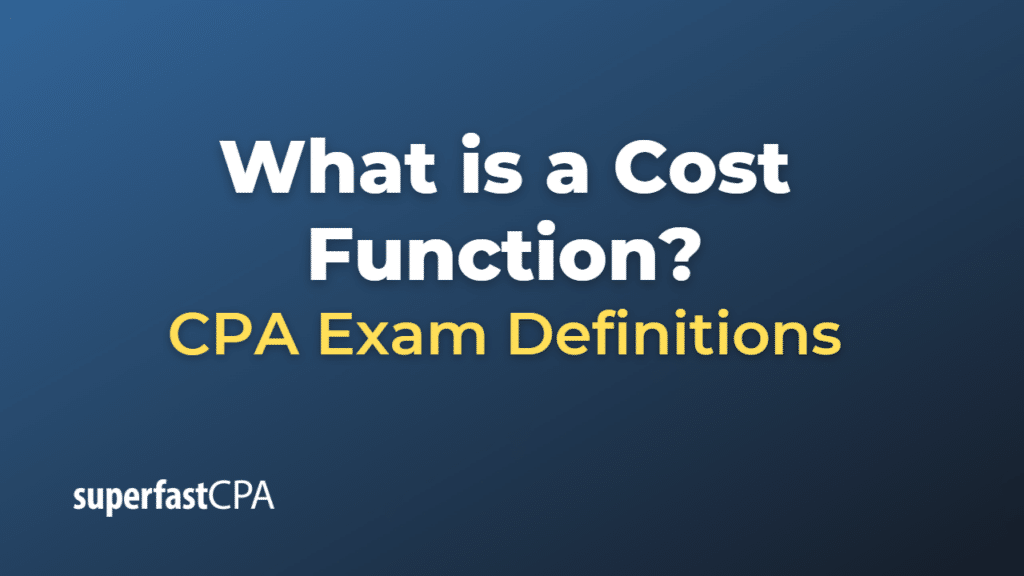Cost Function
In economics and cost accounting, a cost function represents the relationship between the cost of producing a certain number of goods and the quantity of goods produced. In other words, it shows how production costs change with changes in the level of output.
The cost function usually takes into account variable costs and fixed costs. Variable costs change directly with the level of output (e.g., raw materials, direct labor), while fixed costs remain constant regardless of output levels (e.g., rent, salaries).
In its simplest form, a cost function could be represented as follows:
C(Q) = FC + VC(Q)
Where:
- C(Q) is the total cost of producing Q units of a good
- FC is the total fixed costs
- VC(Q) is the total variable costs of producing Q units of a good
In many real-world situations, the cost function may be more complex, reflecting economies of scale, inefficiencies, or other factors that can cause costs to rise more quickly or slowly than the quantity of output.
By understanding the cost function, a business can make informed decisions about production levels, pricing, and profitability. It can also use the cost function to predict future costs at different levels of output, which can aid in budgeting and financial forecasting.
Example of a Cost Function
Let’s consider a fictional company, “Cupcake Heaven,” which produces gourmet cupcakes. The company has fixed costs and variable costs associated with its cupcake production.
- Fixed Costs (FC): These costs do not change regardless of the number of cupcakes produced. They include costs like rent for the bakery, salaries for permanent staff, and insurance. Let’s say these fixed costs amount to $10,000 per month.
- Variable Costs (VC): These costs change directly with the number of cupcakes produced. They include costs like ingredients, packaging, and utilities. Suppose it costs $1 to produce one cupcake, which includes the cost of ingredients and packaging.
The cost function for Cupcake Heaven can be written as:
C(Q) = FC + VC(Q)
Where:
- C(Q) is the total cost of producing Q cupcakes
- FC is the total fixed costs, which is $10,000
- VC(Q) is the total variable costs of producing Q cupcakes, which is $1 per cupcake
So, if Cupcake Heaven wants to produce 5,000 cupcakes in a month, we can use the cost function to calculate the total cost:
C(5000) = $10,000 + $1(5000) = $10,000 + $5,000 = $15,000
So, the total cost of producing 5,000 cupcakes would be $15,000 according to the cost function.
This cost function helps Cupcake Heaven understand how its total costs will change with different levels of output. It can also use this information to make decisions about pricing and profitability, and to forecast costs for future periods.












